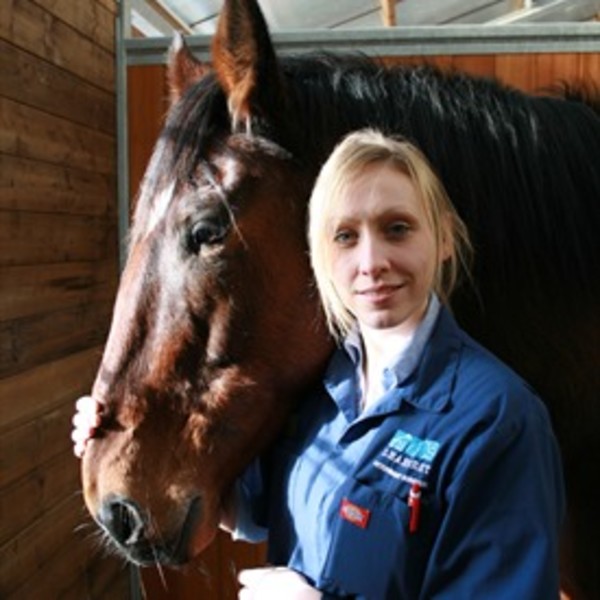by Fran Jurga | 22 September 2009 | The Jurga Report at Equisearch.com

A team of researchers working at Philip Leverhulme Equine Hospital at the University of Liverpool have discovered that Escherichia coli (E. coli) bacteria in a horse’s intestine appear to acquire antibiotic resistance while a horse is hospitalized.
E. coli is a bacterium that is commonly found in the lower intestine of animals. Most E. coli strains are harmless and are part of the normal flora of the gut.
The researchers found a significant increase in multiple drug resistance in E. coli samples isolated from horses’ feces after a period of hospitalization.
Research team leader Adele Williams (shown in photo) received funding from British equine charity The Horse Trust and presented her research earlier this year at the European College of Equine Internal Medicine Congress.
Williams and fellow researchers collected fecal samples from randomly selected horses over an 18 month period between 2006 and 2008 when the horse was admitted, and again after the horse had been hospitalized for seven days. The selected horses included horses treated and not treated with antibiotics before and during hospitalization.

E. coli bacteria cultured from the samples were tested for their sensitivity to eight antibiotics (neomycin, ampicillin, ceftiofur, gentamicin, chloramphenicol, ciprofloxacin, tetracycline and trimethoprim) using the Kirby-Bauer disk diffusion method. The antibiotics chloramphenicol and tetracycline are not used at the hospital.
The researchers found a significant increase in resistance during the week’s hospitalization for seven of the eight antibiotics; no significant difference was found for neomycin. Antibiotic resistance increased even in horses not treated with antibiotics and to antibiotics that are not used in the hospital.
This increase may be due to the transfer of antibiotic resistant genes as a result of selection pressure for antibiotic resistance in the hospital environment, or it may be because the number of resistant E. coli is greatly increased due to selective pressure so that they are much easier to detect, or that resistant isolates have been acquired from the environment. Further research is needed to understand the source of antibiotic resistance in the environment.
“Pathogenic bacteria are likely to be exposed to the same selection pressures or could receive the same resistant genes, so it is vital we improve hygiene in equine hospitals and reduce the overuse of antibiotics,” said Williams. “People who work in equine hospitals need to pay strict attention to hygiene and should reserve antibiotics for essential cases only.”








